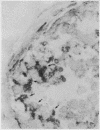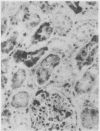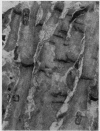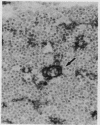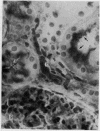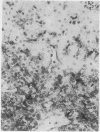Abstract
A detailed immunohistological analysis of normal tissues for the distribution of lymphocyte function-associated antigens (LFA) and the intercellular adhesion molecule-1 (ICAM-1) showed several hitherto unrecognised patterns of LFA-3 and ICAM-1 expression. The widespread, but not ubiquitous, distribution of LFA-3 contrasted with the more restricted distribution of ICAM-1. Among epithelial cells, all tissues which were ICAM-1 positive were also LFA-3 positive with the single exception that thymic cortical epithelium, in contrast to previous reports, expressed only ICAM-1. It was striking that LFA-3 molecules were absent in some tissues which are considered to be sites of immunological privilege (such as brain and testis), suggesting an additional mechanism by which these microenvironments maintain immunological autonomy. Furthermore, the unexpected finding that LFA-3 is strongly expressed on intercalated discs of cardiac muscle may possibly be related to a non-immune function, or indicate a structurally similar epitope expressed by an unrelated molecule within this tissue.
Full text
PDF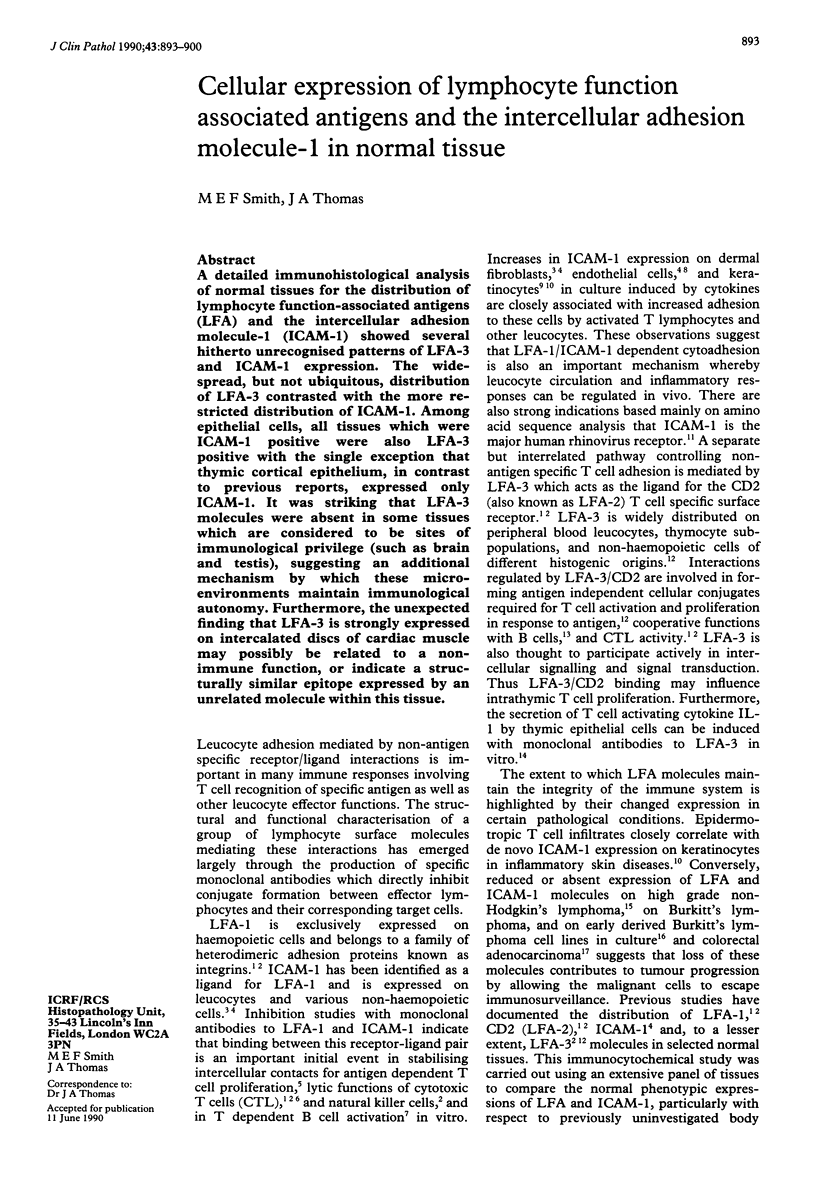
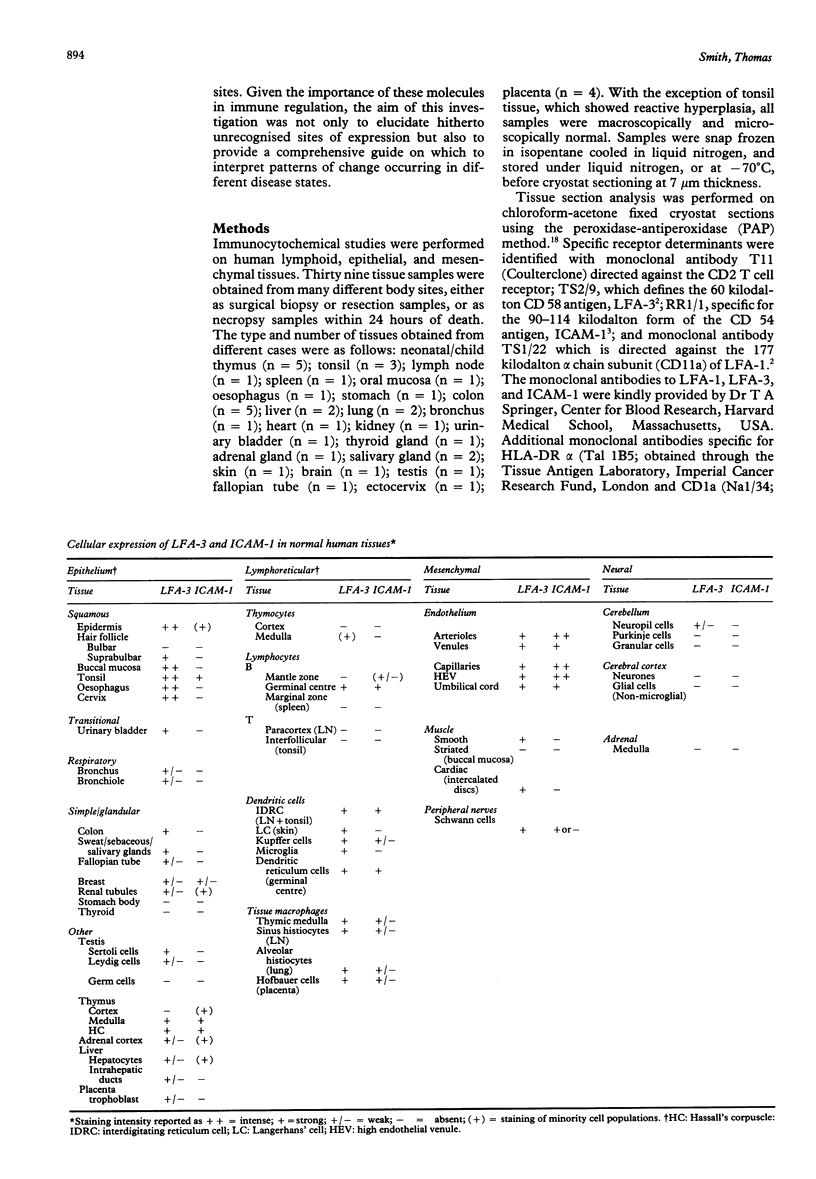
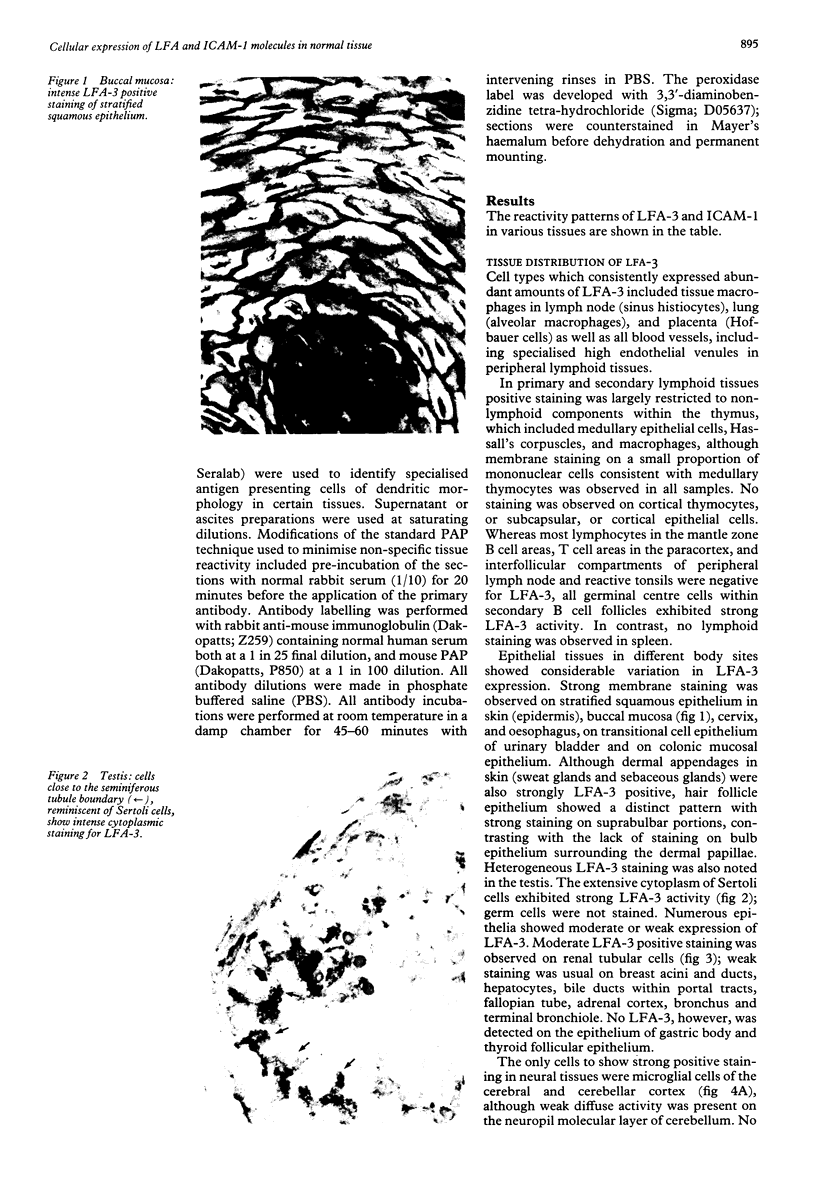
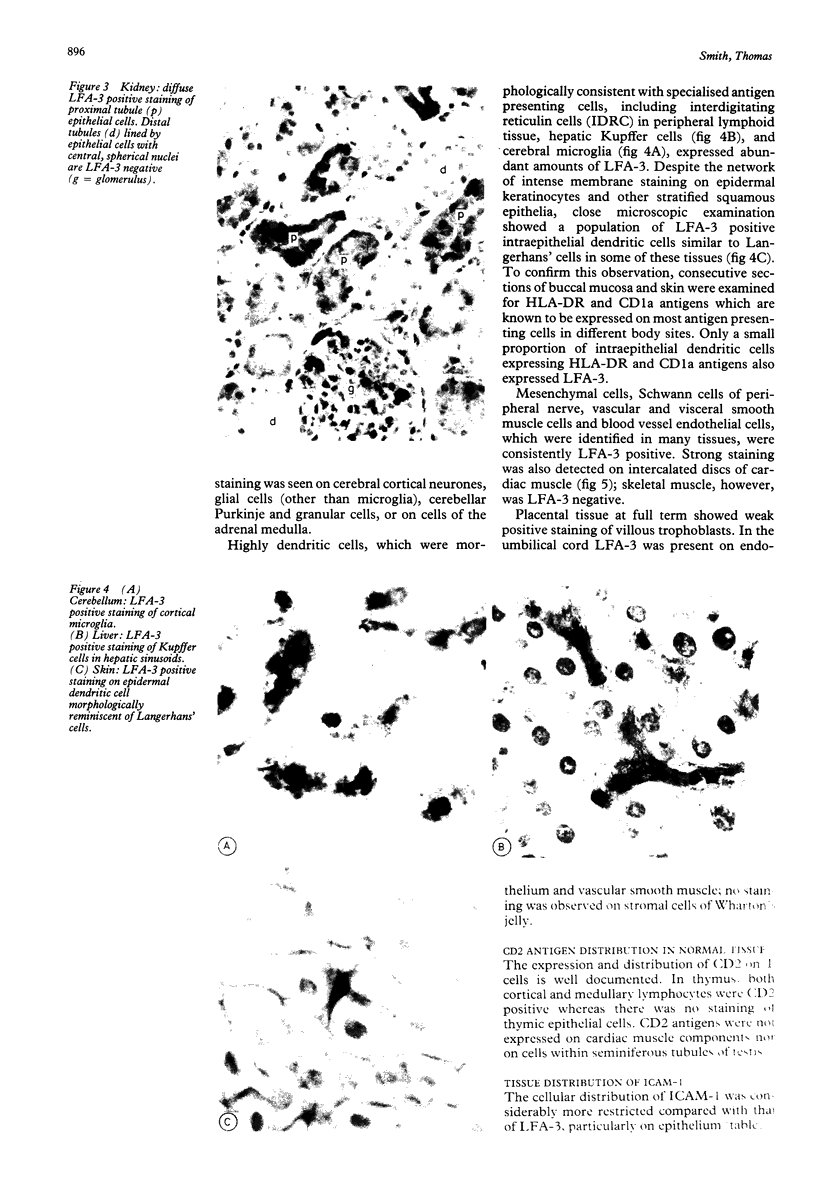
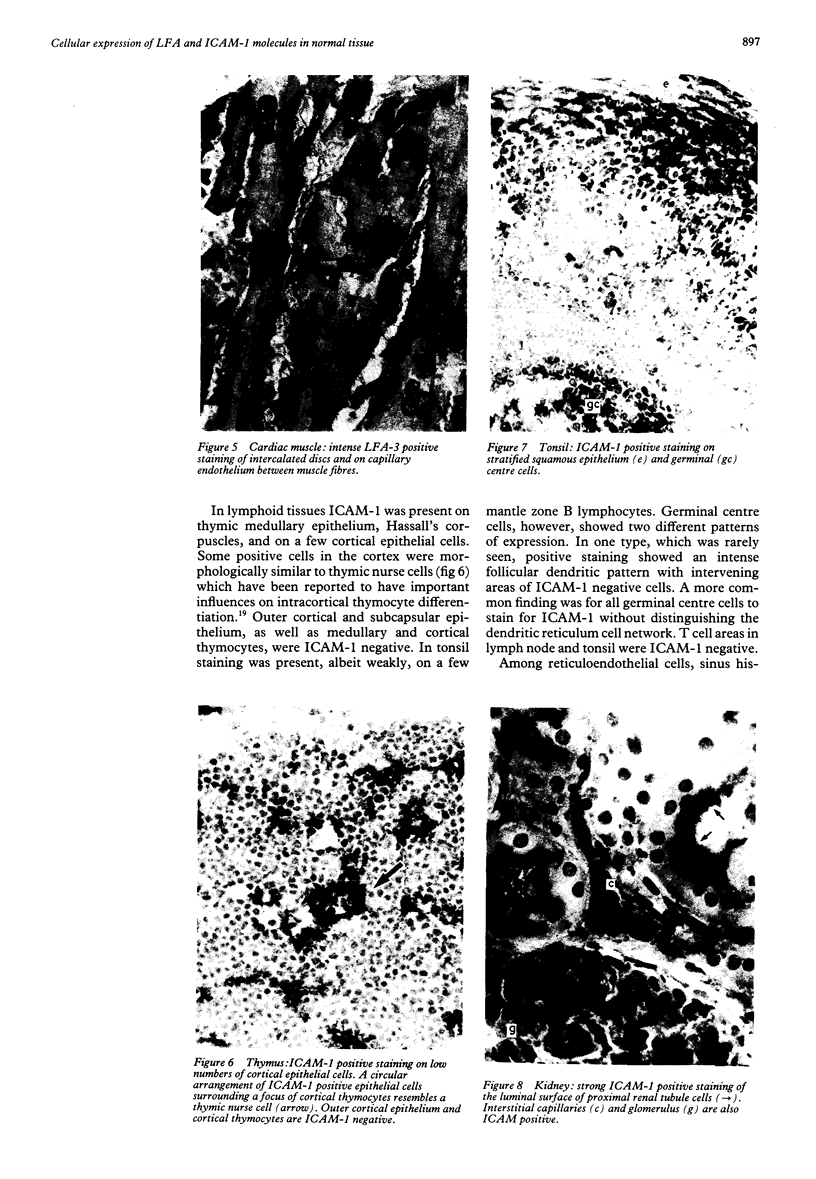
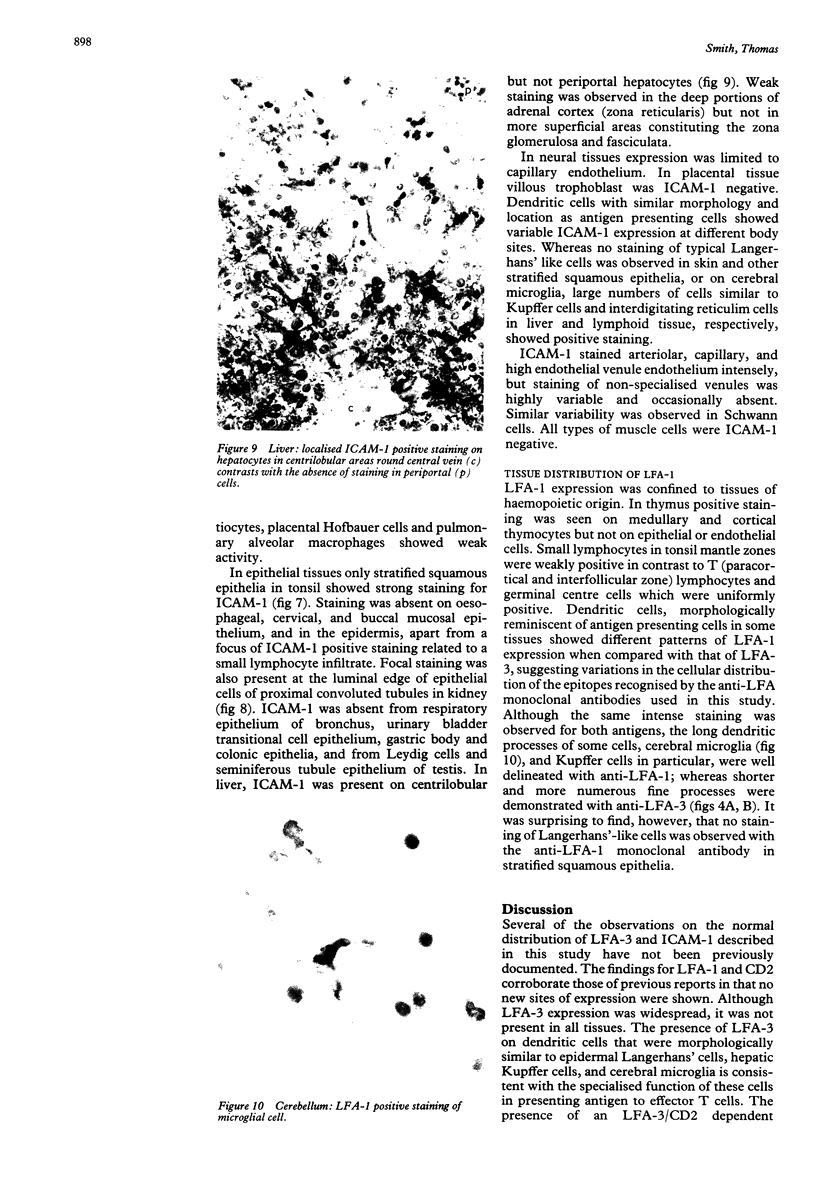
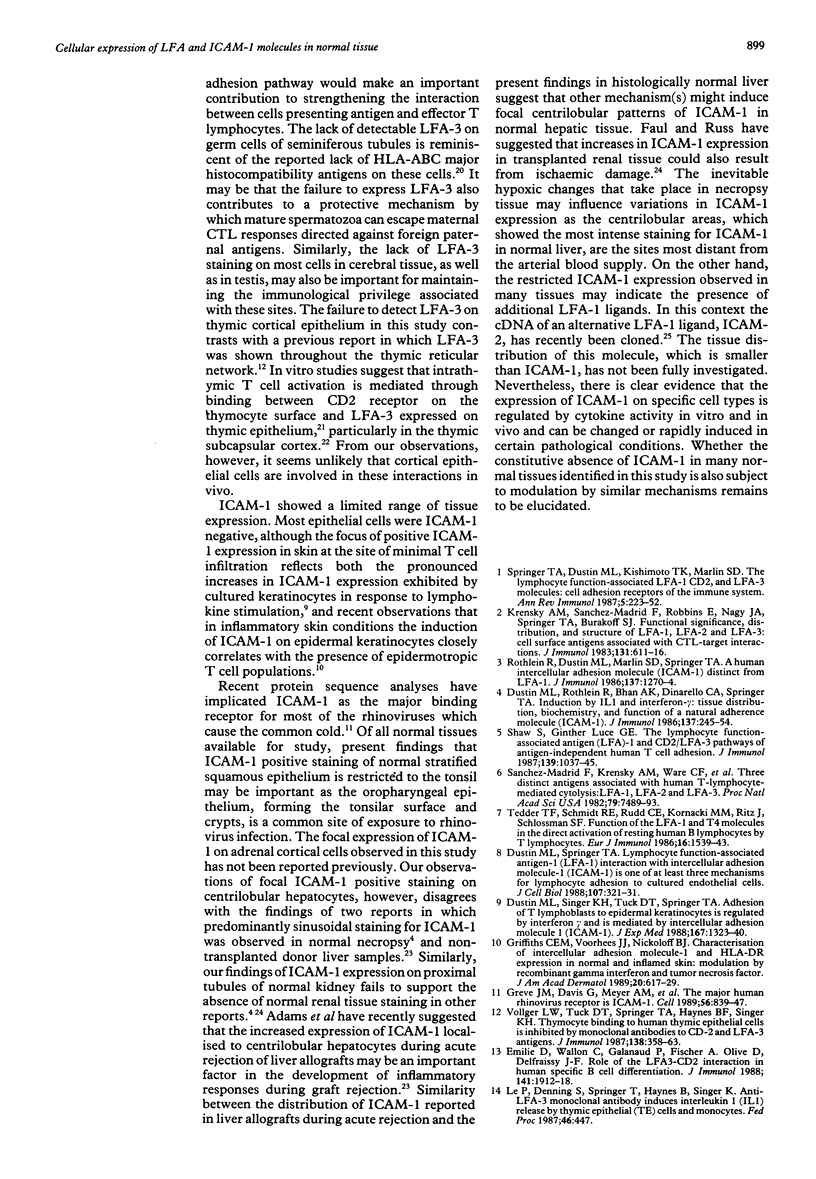
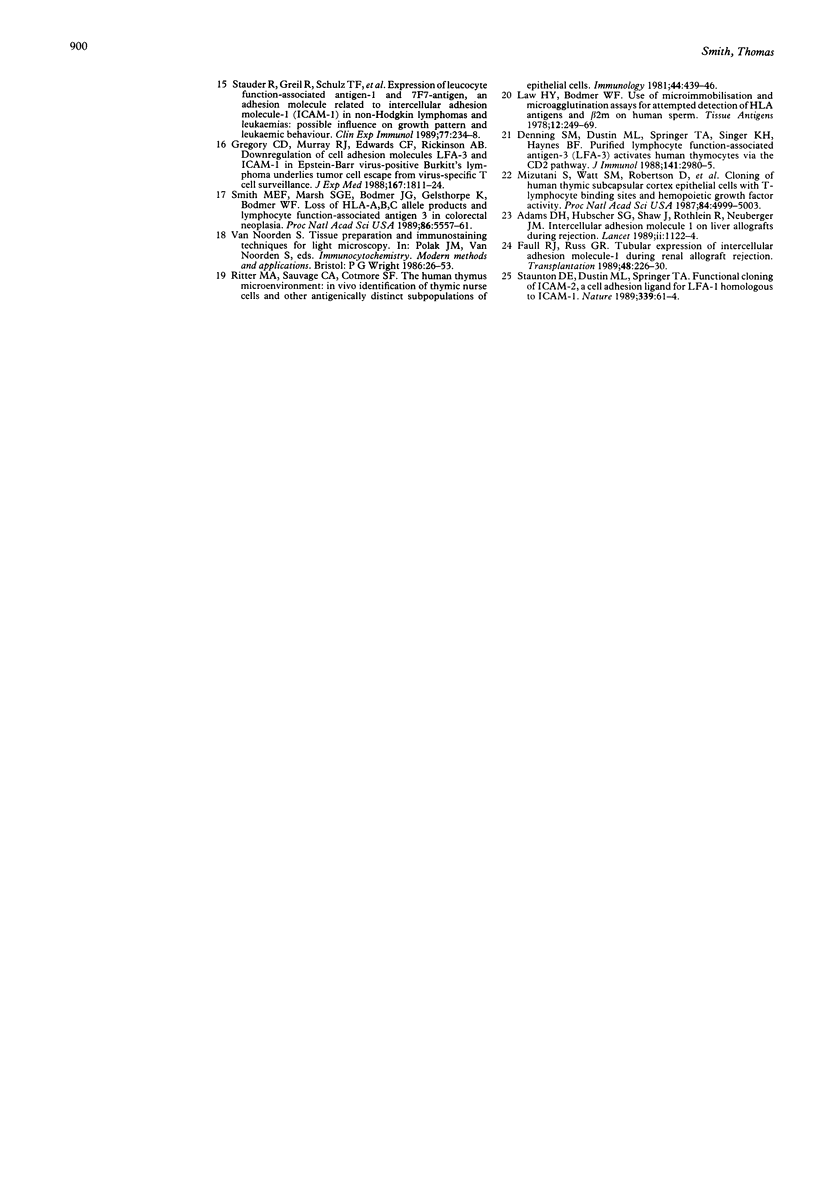
Images in this article
Selected References
These references are in PubMed. This may not be the complete list of references from this article.
- Denning S. M., Dustin M. L., Springer T. A., Singer K. H., Haynes B. F. Purified lymphocyte function-associated antigen-3 (LFA-3) activates human thymocytes via the CD2 pathway. J Immunol. 1988 Nov 1;141(9):2980–2985. [PubMed] [Google Scholar]
- Dustin M. L., Rothlein R., Bhan A. K., Dinarello C. A., Springer T. A. Induction by IL 1 and interferon-gamma: tissue distribution, biochemistry, and function of a natural adherence molecule (ICAM-1). J Immunol. 1986 Jul 1;137(1):245–254. [PubMed] [Google Scholar]
- Dustin M. L., Singer K. H., Tuck D. T., Springer T. A. Adhesion of T lymphoblasts to epidermal keratinocytes is regulated by interferon gamma and is mediated by intercellular adhesion molecule 1 (ICAM-1). J Exp Med. 1988 Apr 1;167(4):1323–1340. doi: 10.1084/jem.167.4.1323. [DOI] [PMC free article] [PubMed] [Google Scholar]
- Dustin M. L., Springer T. A. Lymphocyte function-associated antigen-1 (LFA-1) interaction with intercellular adhesion molecule-1 (ICAM-1) is one of at least three mechanisms for lymphocyte adhesion to cultured endothelial cells. J Cell Biol. 1988 Jul;107(1):321–331. doi: 10.1083/jcb.107.1.321. [DOI] [PMC free article] [PubMed] [Google Scholar]
- Emilie D., Wallon C., Galanaud P., Fischer A., Olive D., Delfraissy J. F. Role of the LFA3-CD2 interaction in human specific B cell differentiation. J Immunol. 1988 Sep 15;141(6):1912–1918. [PubMed] [Google Scholar]
- Faull R. J., Russ G. R. Tubular expression of intercellular adhesion molecule-1 during renal allograft rejection. Transplantation. 1989 Aug;48(2):226–230. doi: 10.1097/00007890-198908000-00009. [DOI] [PubMed] [Google Scholar]
- Gregory C. D., Murray R. J., Edwards C. F., Rickinson A. B. Downregulation of cell adhesion molecules LFA-3 and ICAM-1 in Epstein-Barr virus-positive Burkitt's lymphoma underlies tumor cell escape from virus-specific T cell surveillance. J Exp Med. 1988 Jun 1;167(6):1811–1824. doi: 10.1084/jem.167.6.1811. [DOI] [PMC free article] [PubMed] [Google Scholar]
- Greve J. M., Davis G., Meyer A. M., Forte C. P., Yost S. C., Marlor C. W., Kamarck M. E., McClelland A. The major human rhinovirus receptor is ICAM-1. Cell. 1989 Mar 10;56(5):839–847. doi: 10.1016/0092-8674(89)90688-0. [DOI] [PubMed] [Google Scholar]
- Griffiths C. E., Voorhees J. J., Nickoloff B. J. Characterization of intercellular adhesion molecule-1 and HLA-DR expression in normal and inflamed skin: modulation by recombinant gamma interferon and tumor necrosis factor. J Am Acad Dermatol. 1989 Apr;20(4):617–629. doi: 10.1016/s0190-9622(89)70073-6. [DOI] [PubMed] [Google Scholar]
- Krensky A. M., Sanchez-Madrid F., Robbins E., Nagy J. A., Springer T. A., Burakoff S. J. The functional significance, distribution, and structure of LFA-1, LFA-2, and LFA-3: cell surface antigens associated with CTL-target interactions. J Immunol. 1983 Aug;131(2):611–616. [PubMed] [Google Scholar]
- Law H. Y., Bodmer W. F. Use of microimmobilization and microagglutination assays for attempted detection of HLA antigens and beta2 microglobulin on human sperm. Tissue Antigens. 1978 Oct;12(4):249–269. doi: 10.1111/j.1399-0039.1978.tb01333.x. [DOI] [PubMed] [Google Scholar]
- Mizutani S., Watt S. M., Robertson D., Hussein S., Healy L. E., Furley A. J., Greaves M. F. Cloning of human thymic subcapsular cortex epithelial cells with T-lymphocyte binding sites and hemopoietic growth factor activity. Proc Natl Acad Sci U S A. 1987 Jul;84(14):4999–5003. doi: 10.1073/pnas.84.14.4999. [DOI] [PMC free article] [PubMed] [Google Scholar]
- Pfisterer M., Burkart F., Jockers G., Meyer B., Regenass S., Burckhardt D., Schmitt H. E., Müller-Brand J., Skarvan K., Stulz P. Trial of low-dose aspirin plus dipyridamole versus anticoagulants for prevention of aortocoronary vein graft occlusion. Lancet. 1989 Jul 1;2(8653):1–7. doi: 10.1016/s0140-6736(89)90253-5. [DOI] [PubMed] [Google Scholar]
- Ritter M. A., Sauvage C. A., Cotmore S. F. The human thymus microenvironment: in vivo identification of thymic nurse cells and other antigenically-distinct subpopulations of epithelial cells. Immunology. 1981 Nov;44(3):439–446. [PMC free article] [PubMed] [Google Scholar]
- Rothlein R., Dustin M. L., Marlin S. D., Springer T. A. A human intercellular adhesion molecule (ICAM-1) distinct from LFA-1. J Immunol. 1986 Aug 15;137(4):1270–1274. [PubMed] [Google Scholar]
- Sanchez-Madrid F., Krensky A. M., Ware C. F., Robbins E., Strominger J. L., Burakoff S. J., Springer T. A. Three distinct antigens associated with human T-lymphocyte-mediated cytolysis: LFA-1, LFA-2, and LFA-3. Proc Natl Acad Sci U S A. 1982 Dec;79(23):7489–7493. doi: 10.1073/pnas.79.23.7489. [DOI] [PMC free article] [PubMed] [Google Scholar]
- Shaw S., Luce G. E. The lymphocyte function-associated antigen (LFA)-1 and CD2/LFA-3 pathways of antigen-independent human T cell adhesion. J Immunol. 1987 Aug 15;139(4):1037–1045. [PubMed] [Google Scholar]
- Smith M. E., Marsh S. G., Bodmer J. G., Gelsthorpe K., Bodmer W. F. Loss of HLA-A,B,C allele products and lymphocyte function-associated antigen 3 in colorectal neoplasia. Proc Natl Acad Sci U S A. 1989 Jul;86(14):5557–5561. doi: 10.1073/pnas.86.14.5557. [DOI] [PMC free article] [PubMed] [Google Scholar]
- Springer T. A., Dustin M. L., Kishimoto T. K., Marlin S. D. The lymphocyte function-associated LFA-1, CD2, and LFA-3 molecules: cell adhesion receptors of the immune system. Annu Rev Immunol. 1987;5:223–252. doi: 10.1146/annurev.iy.05.040187.001255. [DOI] [PubMed] [Google Scholar]
- Stauder R., Greil R., Schulz T. F., Thaler J., Gattringer C., Radaskiewicz T., Dierich M. P., Huber H. Expression of leucocyte function-associated antigen-1 and 7F7-antigen, an adhesion molecule related to intercellular adhesion molecule-1 (ICAM-1) in non-Hodgkin lymphomas and leukaemias: possible influence on growth pattern and leukaemic behaviour. Clin Exp Immunol. 1989 Aug;77(2):234–238. [PMC free article] [PubMed] [Google Scholar]
- Staunton D. E., Dustin M. L., Springer T. A. Functional cloning of ICAM-2, a cell adhesion ligand for LFA-1 homologous to ICAM-1. Nature. 1989 May 4;339(6219):61–64. doi: 10.1038/339061a0. [DOI] [PubMed] [Google Scholar]
- Tedder T. F., Schmidt R. E., Rudd C. E., Kornacki M. M., Ritz J., Schlossman S. F. Function of the LFA-1 and T4 molecules in the direct activation of resting human B lymphocytes by T lymphocytes. Eur J Immunol. 1986 Dec;16(12):1539–1543. doi: 10.1002/eji.1830161212. [DOI] [PubMed] [Google Scholar]
- Vollger L. W., Tuck D. T., Springer T. A., Haynes B. F., Singer K. H. Thymocyte binding to human thymic epithelial cells is inhibited by monoclonal antibodies to CD-2 and LFA-3 antigens. J Immunol. 1987 Jan 15;138(2):358–363. [PubMed] [Google Scholar]




